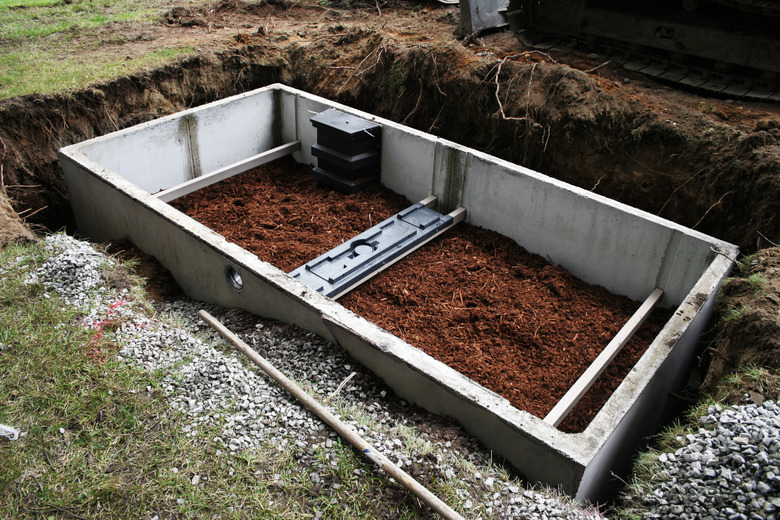How Deep Should A Septic Leach Field Be?
The drain or leach field is an important part of a septic system, and an improperly sized field can cause major problems. These problems can include waste puddles popping up in your lawn, so it's important to understand the basics of how a drain field functions. You certainly don't need to become a septic system expert, but a little knowledge goes a long way toward keeping your drain field in good working order.
Tip
Several factors determine the ultimate depth of a septic system's drain field. Generally, however, drain fields are between 2 and 5 feet deep.
How the Drain Field Works
In a septic system, solid waste stays contained in your septic tank until you've pumped it out. The bacteria in that waste, however, is much more mobile. During the septic process, solid waste sinks to the bottom of your tank while wastewater (and the bacteria it contains) flows out of the septic tank itself and into the drain field. Once there, the water percolates through the soil and then joins the local groundwater.
As the water percolates through the soil, the bacteria it contains become trapped in the soil particles. Microbes in the soil eventually eat the bacteria. In the meantime, the soil holds potentially harmful bacteria in place to prevent them from reaching groundwater or contaminating wells, streams, and other water sources. This is an important job that requires the proper soil conditions — including the right drain field size and depth.
Drain Field Depth
Drain fields are made by laying a series of perforated pipes into a gravel bed. Generally, a finished bed contains 12 inches of gravel below the pipe and another 2 inches on top. The field is then backfilled with 18 to 30 inches of soil to finish the bed and bring it even with the surrounding ground. The result is a drain field about 3 to 4 feet deep.
Sometimes, however, a drain field may need to be a bit shallower and can result in drain pipes as close to the surface as 6 inches. Underground obstacles can cause this situation. A slab of bedrock beneath the soil, for instance, can create an impermeable surface that requires installing a shallower drain field. High groundwater tables can do the same, requiring a drain field capable of filtering bacteria at a shallower depth to avoid contamination.
In these situations, it's best to keep the bottom of the drain field 12 to 24 inches above the underground obstacle. This is sometimes achieved by making the drain field shallower but wider or longer. In other situations, a mounded or raised drain field becomes necessary.
Drain Field Width and Length
Your septic system designer will calculate the exact size requirements of your drain field based on the number of bedrooms in your home. The designer will also factor in zoning requirements, soil conditions, and the specifics of your lot into the equation. Many municipalities, for example, require your drain field to remain a certain distance away from your property line. Local building codes also define setbacks from streams, wetlands, water supply lines, local water wells, and other potential obstacles.
Typically, the pipes in your drain field run about 100 to 150 feet in length, although they can run longer. Pipes are often set 6 feet apart from each other as well. Setting pipes 1 to 3 feet apart is generally adequate. Spacing them 6 feet apart, however, allows for the addition of more pipes later at a 3-foot spacing if necessary without expanding the overall footprint of the drain field.
The exact amount of drain field pipe required is measured in linear feet. The configuration of this pipe is then planned out based on the available area you have for the leach field. Soils with a high percolation or water flow rate usually require a smaller drain field than areas with heavy clay soils that take longer to drain.
